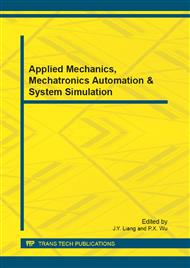[1]
Ambrosini, C., Routhier, J.L., 2004. Objectives, methods and results of surveys carried out in the field of urban freight transport: an international comparison. Transport Reviews 24 (1), 57–77.
DOI: 10.1080/0144164032000122343
Google Scholar
[2]
Chien, T.W., 1992. Operational estimators for the length of a traveling salesman tour. Computers and Operations Research 19 (6), 469–478.
DOI: 10.1016/0305-0548(92)90002-m
Google Scholar
[3]
Daganzo, C.F., 1984. The distance traveled to visit N-points with a maximum of C-stops per vehicle – an analytic model and an application. Transportation Science 18 (4), 331–350.
DOI: 10.1287/trsc.18.4.331
Google Scholar
[4]
Figliozzi, M., 2006. Modeling the impact of technological changes on urban commercial trips by commercial activity routing type. Transportation Research Record 1964, 118–126.
DOI: 10.1177/0361198106196400113
Google Scholar
[5]
Figliozzi, M., 2007a. Planning approximations to the length of TSP and VRP problems. Working Paper ITLS-WP-07-03, Institute of Transport and Logistics Studies, University of Sydney.
Google Scholar
[6]
Figliozzi, M.A., 2007b. Analysis of the efficiency of urban commercial vehicle tours: data collection, methodology, and policy implications. Transportation Research Part B 41, 1014–1032.
DOI: 10.1016/j.trb.2007.04.006
Google Scholar
[7]
Figliozzi, M.A., 2008. Planning approximations to the average length of vehicle routing problems with varying customer demands and routing constraints. Transportation Research Record 2089, 1–8.
DOI: 10.3141/2089-01
Google Scholar
[8]
Figliozzi, M.A., 2009. The impacts of congestion on commercial vehicle tour characteristics and costs. Transportation Research Part E doi: 10. 1016/j. tre. 2009. 04. 005.
DOI: 10.1016/j.tre.2009.04.005
Google Scholar
[9]
Holguin-Veras, J., Thorson, E., 2003. Modeling commercial vehicle empty trips with a first order trip chain model. Transportation Research Part B 37, 129–148.
DOI: 10.1016/s0191-2615(01)00048-0
Google Scholar
[10]
KWON, O., GOLDEN, B. & WASIL, E. (1995) Estimating The Length Of The Optimal Tsp Tour - An Empirical-Study Using Regression And Neural Networks. Computers & Operations Research, 22, 1039-1046.
DOI: 10.1016/0305-0548(94)00093-n
Google Scholar
[11]
Robuste, F., Galvan, D., Lopez-Pita, A., 2003. Modeling elogistics for urban B2C in Europe. Transportation Research Board Annual Meeting.
Google Scholar


